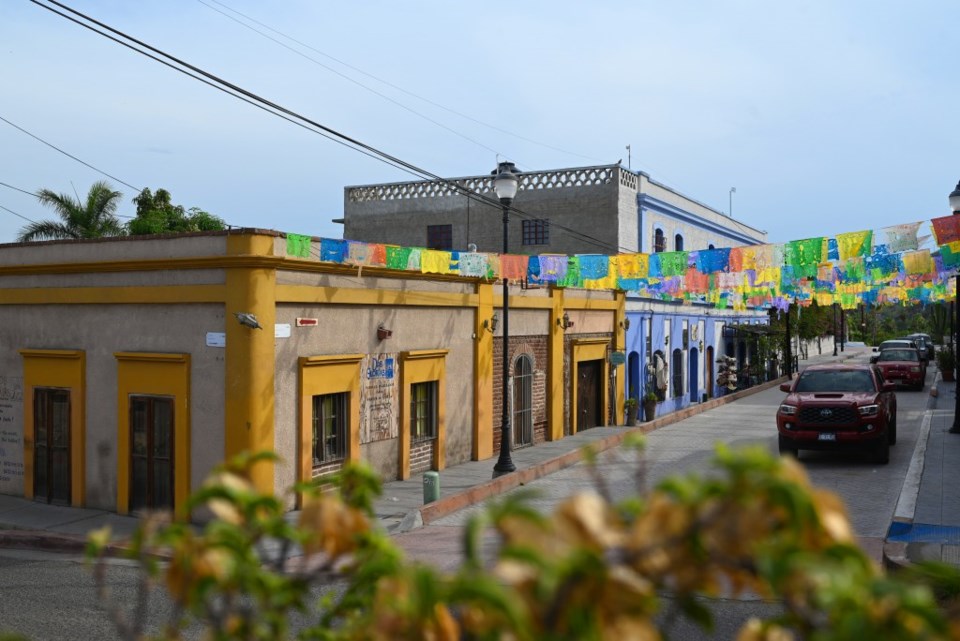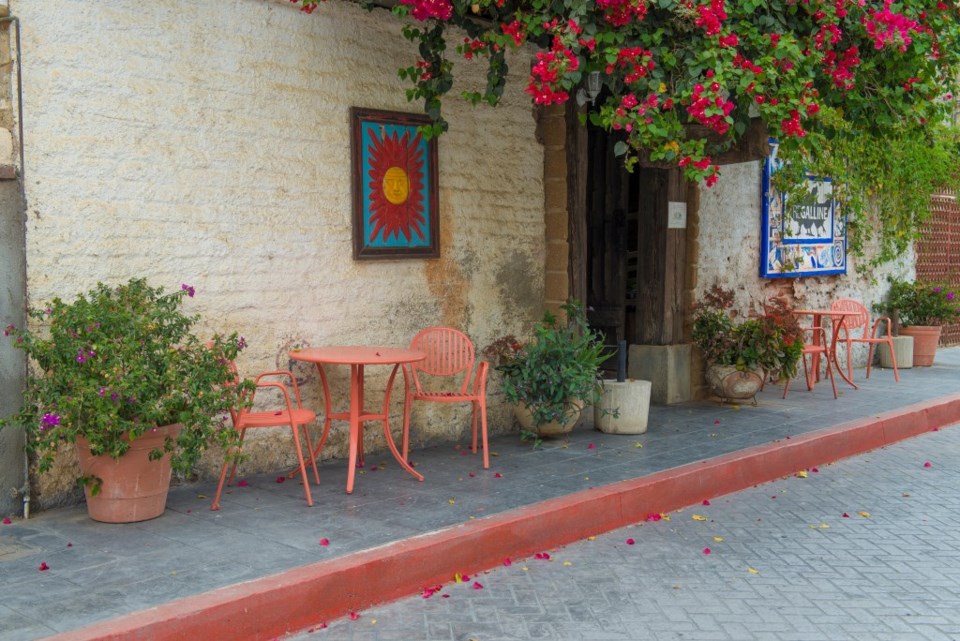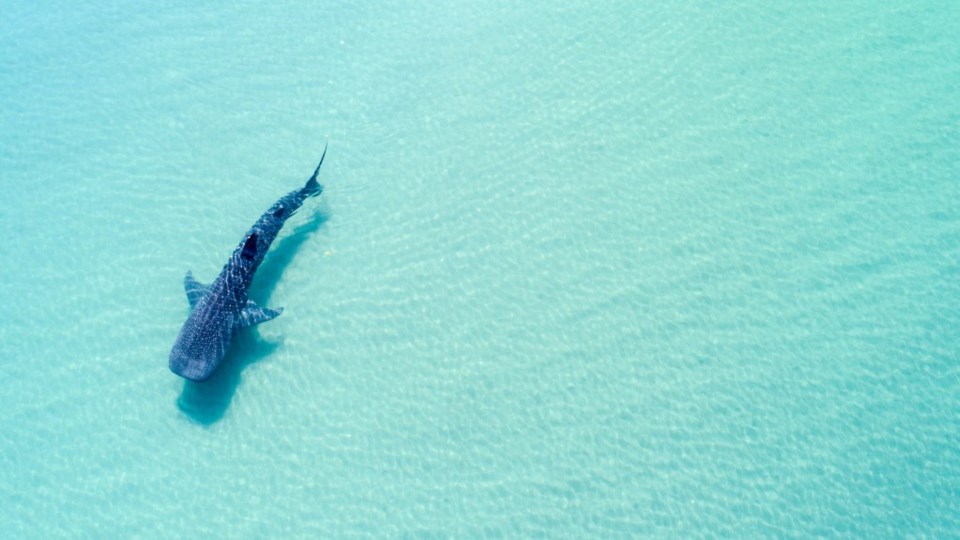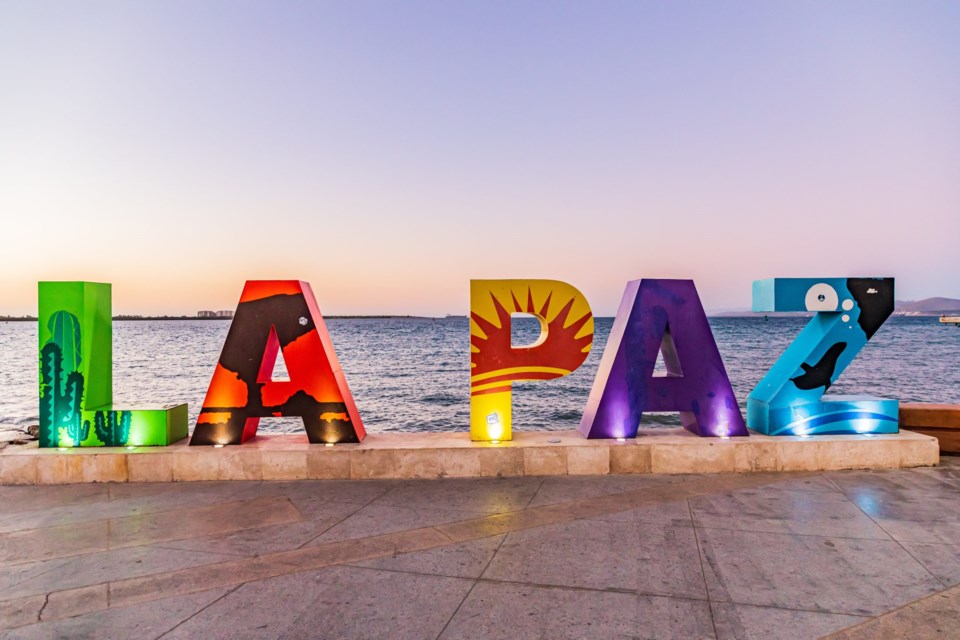For those who like to take the road less traveled, preferring adventures in nature over yacht culture, boutique hotels over all-inclusive resorts and artisan shops over glitzy fashion malls, La Paz and Todos Santos are two Baja California beach towns full of charm without the crowds.

La Paz
Baja California Sur’s capital city of La Paz sits on the eastern side of the peninsula, two hours north of Cabo. The traditional Mexican seaside town is complete with a three-mile Malecón (long boardwalk) that runs alongside the seawall.
Every day, bicyclists, skateboarders, rollerbladers and couples walking hand-in-hand crowd the coastal boardwalk, weaving around sidewalk vendors, various emblematic sculptures and the occasional live musician. Sunset is an especially popular time of day on the Malecón. All activity stops as the sun slowly sinks into the horizon, leaving behind an intensely colorful sky that morphs into different shades of pink, purple and orange every few minutes. Diners at outdoor cafes pick up their cameras or phones to take sunset photos and put them down on the table only to pick them back up again a few minutes later to take another magnificent shot.

La Paz is geared toward nature lovers, where visitors can get up close and personal with the abundance of marine life just off the coast. Jacques Cousteau once called the Sea of Cortez the world’s aquarium. Strap on a mask, jump in the water and find out why: this small patch of water is one of the most biodiverse on earth.
The biggest attraction for marine life lovers takes place from October through April when whale sharks make their annual appearance. Known as “gentle giants,” whale sharks are not actual sharks, but are in fact the largest fish in the world. These blue-spotted creatures can grow up to 32 feet long. They flock to the Sea of Cortez in cooler months to feast on the abundance of plankton in the water.
Because of the whale shark’s gentle nature, humans can swim alongside the massive fish for a once-in-a-lifetime snorkeling experience. But for those who aren’t jazzed about swimming face-to-face with the prehistoric creature, the sharks stick close to the water’s surface to feed, providing a spectacular view from the safety of the boat deck. Snorkelers can also swim with playful sea lions. Hundreds of sea lions lounge, play, jump, swim and frolic on the tiny rock island just north of La Paz named Rafaelito. Tour boats frequently make a pit stop at the miniature island to let snorkelers jump in the water.

Not far from the little island is a much larger island named Espiritu Santo Island. Hernán Cortés named the tropical island the Island of Pearls when he stumbled on it in 1534. Today, it is better known as the UNESCO biosphere reserve that’s home to more than 40% of the marine species that exist in the world. Los Islotes on the northern tip of the island is home to the largest sea lion colony in the Sea of Cortez. The crystal clear water, combined with colorful marine life and coral reefs, makes for great snorkeling with manta rays, dolphins, turtles, gray whales, parrotfish, angelfish, trumpetfish and pufferfish.
While some tourists are attracted to the island solely for its stunning sea life, others make the 45-minute boat trip from La Paz to find a slice of tropical paradise. The island is a treasure trove of crystal clear turquoise inlets, stunning white sand bays and lush mangroves.
The most beautiful beach in the area — and possibly all of Mexico — is Balandra Bay. The secluded beach 30 minutes north of La Paz is designated a “natural protection area,” meaning no construction is allowed. The pristine white sand and lagoon, colored in six distinct hues of blue and turquoise, are a stunning backdrop for photographs. The calm, shallow waters of the bay make it a popular place for kayakers and paddleboarders.

Todos Santos
This redbrick colonial town is paved with cobblestone streets and lined with artisan shops, traditional ice cream parlors, refurbished haciendas and art galleries that attract a bohemian mix of artists, surfers, craftsmen and adventurers.
The small coastal town sits in the shadows of the towering Sierra de la Laguna Mountains on the Pacific side of the Baja Peninsula, overlooking a valley of orchards and gardens. In 2006, the Mexican government designated Todos Santos a pueblo mágico or “magical town.” This designation is awarded to communities that have maintained their original architecture, traditions, history, cuisine and culture over time. The one hundred or so pueblos mágicos that dot the country provide a sense of magic, connecting the visitor to their roots and traditions.

Jesuit missionaries founded Todos Santos — or “all saints” — in 1723. Taking advantage of the region’s soil and reliable water source, they planted a wide variety of crops along the valley floor. Sugar cane grew especially well in the valley. By the late 1800s, Todos Santos was the main exporter of brown sugar to Mexico’s mainland. From the late 1800s to the 1950s, Todos Santos thrived as Baja’s sugar cane capital. Falling sugar prices after World War I, along with the scarcity of available water, eventually put an end to sugar cane production. But remnants of the town’s sugar cane heyday can be found all over town.
Built in 1860, the former Dominguez family redbrick hacienda is now the Guaycura Boutique Hotel Beach Club & Spa. The 14-room Spanish-colonial-style hotel is perfectly situated on a hill just off-center from the town, enabling visitors to catch the best views while sipping cocktails on the hotel’s rooftop terrace. The wooden-beamed ceilings hanging over the stark-white rooms, colorful accent decor, king-size canopy beds and vintage copper bathtubs are throwbacks to how the families of wealthy sugar barons lived.

Strolling through the gently sloping streets along the classic provincial Spanish-style architecture and listening to the sounds of church bells ringing out as they did in the 1800s feels like stepping back to Mexico’s yesteryear. There are no mega-resorts, cruise ships, McDonald’s or loud tourist bars hawking two-for-one margarita specials. Instead, Todos Santos has embraced its historical and artistic roots. And they are on display for all to see. The authors, poets and artists who live here have built an art colony out of the former sugar cane empire. Today, art lovers can browse the never-ending craft, jewelry and boutique shops tucked away along the main avenues surrounding the plaza or explore art galleries displaying everything from paintings to sculptures to ceramic tile designs and stained glass.
After exploring the town, most travelers hit the beach. Surfing is another huge draw to the region. The Todos Santos area is an epicenter for some of the best surfing in all of Mexico. The numerous point breaks, consistent swells and cooling water make this section of the coastline a treasure trove for surfers of all levels. The gentle waves and smooth, sandy beach bottoms of nearby Los Cerritos beach are perfect for beginners to hone the craft of standing up on the board. La Pastora beach, with its large waves, large point breaks and enormous northwest swells, is ideal for more advanced surfers.
Mexico is a massive country with multiple tourist hotspots. Those willing to sidestep the beaten path, however, will find a treasure trove of laid-back traditional towns waiting to be discovered. Both La Paz and Todos Santos are easily accessible from the Cabo San Lucas airport but far enough away from all-inclusive resorts that the curious traveler will swear they are in a different country entirely.




